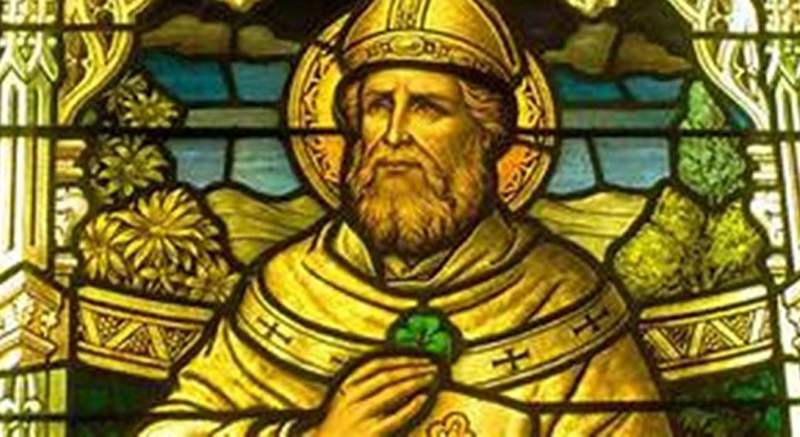(circa 385-461)
One of the most famous of all saints, Patrick was born as Maewyn Succat in Roman Britain to a Christian family.
When he was 15 or 16, he was kidnapped by Irish pirates who sold him in Northern Ireland as a slave. In his “Confession,” in which he signs himself Patricius and tells the experience of those years, he writes, “Love for God and His fear grew in me, and so faith. In a single day I recited one hundred prayers, and at night almost as many. I prayed in the woods and mountains, even before the dawn. Neither the snow, nor the ice, nor the rain seemed to touch me.”
After six years of servitude, Patrick managed to escape, travel 200 kilometers on foot and convinced some sailors to bring him back to Britain and his family. Some years later Patrick had a vision of a man coming to him with letters from the Irish calling him back to Ireland. This encouraged him to continue his education and was ordained a presbyterate by Germanus, bishop of Auxerre.
Because of his spotty education, he would not yet be able to fulfill his dream. He said, “I had not studied as others who have fed in equal measure of Law and Sacred Scripture, and from their infancy perfected their language. Instead, I had to learn a foreign language. Some accuse me of ignorance and have a stuttering speech, but it is actually written that stuttering tongues learn quickly to talk of peace.”
Against these challenges, sometime between 431 and 432, Patrick was consecrated bishop of Ireland by Pope Celestine I. In 432, Patrick once again stepped on Irish soil, but he would face countless difficulties: the chief of one of the Druid tribes tried to kill him, and for 60 days he was imprisoned, but despite the tribulations, Patrick persisted nearly 40 years in his missionary work, converting thousands of Irish, introducing monastic life and establishing the episcopal see in Armagh.
According to tradition, St. Patrick used to explain the mystery of the Trinity by showing the clover, in which three leaflets are joined at a single stem. The first written testimony of this dates to 1726, though the tradition could have much older roots.
The images of St. Patrick often portray him with a cross in one hand and a clover in the other. That is why the clover now is a symbol of St. Patrick’s Day, which falls on March 17, the day of his death in 461 at Saul. His remains were transported and buried in the cathedral of Down, which since then has been called Downpatrick.
Adapted by A.J. Valentini from: St. Patrick, Bishop, Disciple of Ireland – Information on the – Vatican News. (n.d.). Vatican News. Retrieved March 9, 2021, from https://www.vaticannews.va/en/saints/03/17/st–patrick–bishop–disciple-of-ireland-.html
